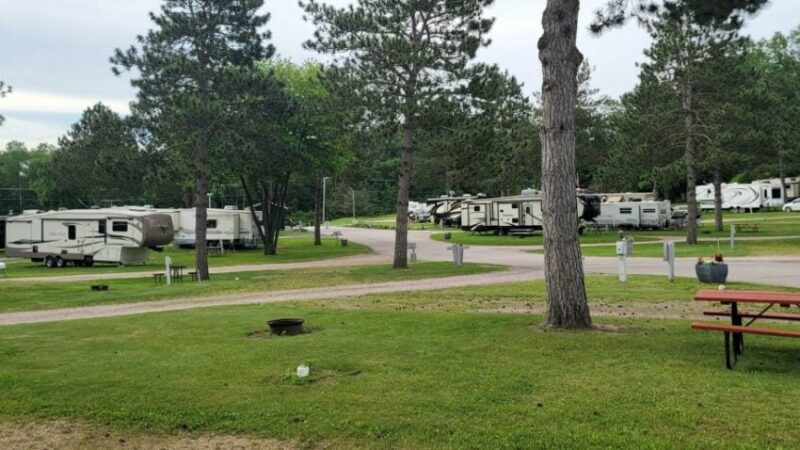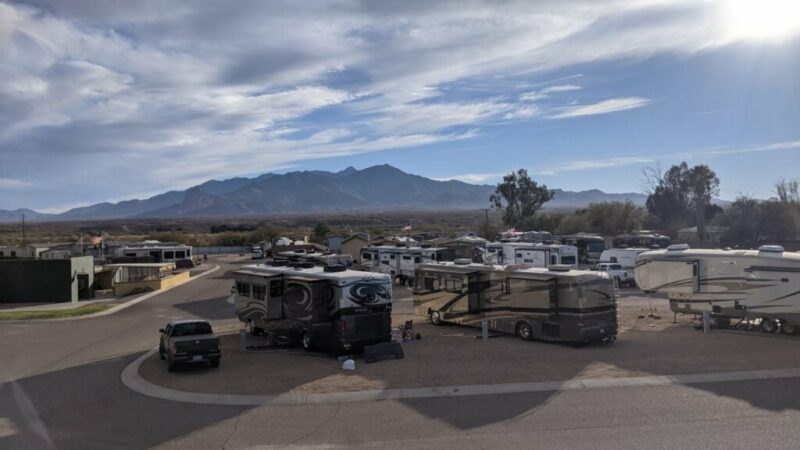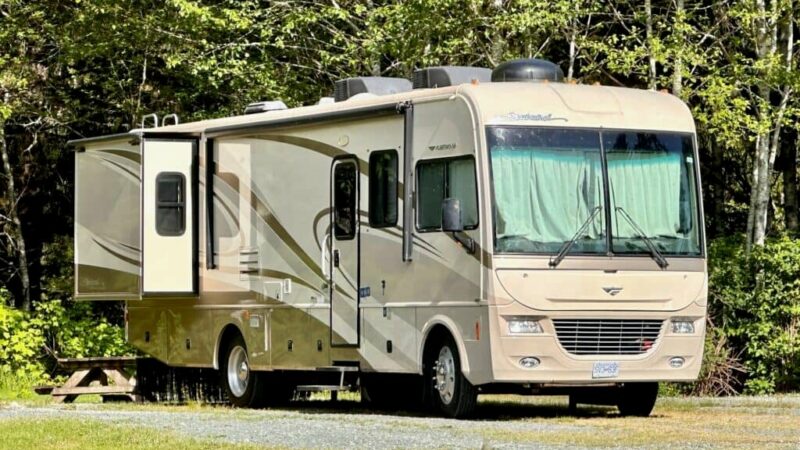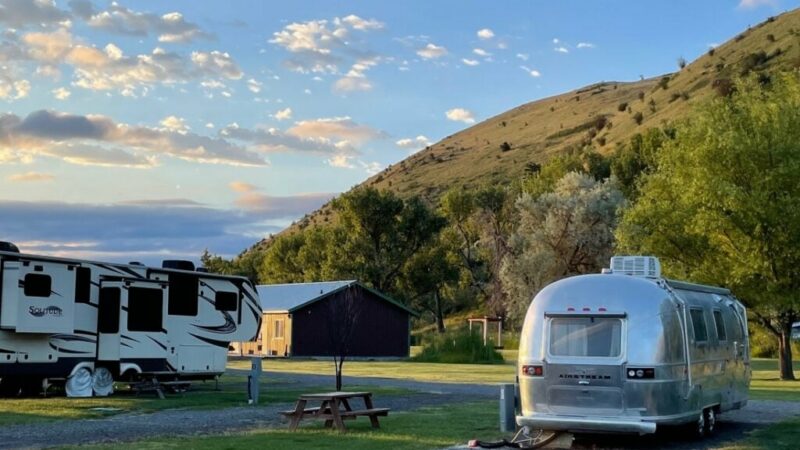Are You Making These RV Driving Mistakes?
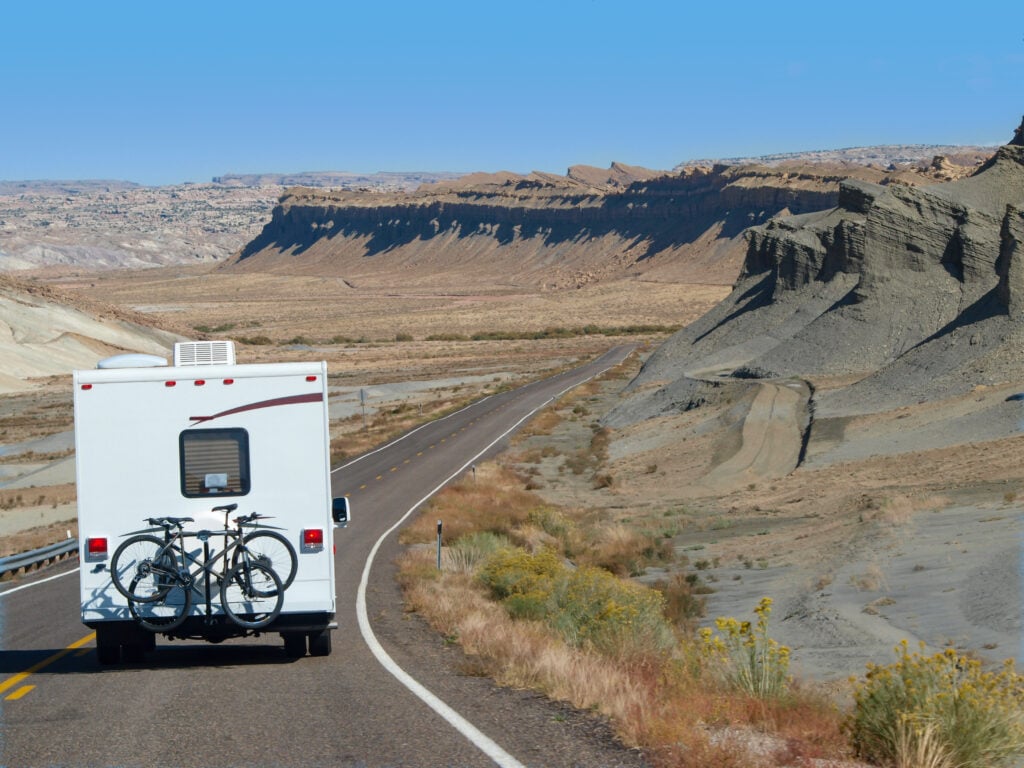
Avoid These Common RV Driving Mistakes
Driving an RV gives you a lot more freedom to travel and camp wherever you want. However, they’re also larger and heavier than traditional cars, so there’s a learning curve when you take your RV out on the road. If you’re a bad driver, you’ll be putting yourself and everyone around you at risk.
Luckily, driving is a skill that anyone can develop and improve over time. It just takes practice and patience. Even if you’re good at driving cars, an RV is a whole new beast. You’ll have to be extra aware of your surroundings and prepare for upcoming turns and lane changes far in advance.
Most other drivers that you share the road with will recognize that your RV is more powerful and more dangerous than their cars. As such, they tend to give you a bit more leeway and space. Just remember that you don’t want to hit other people, and other people don’t want to hit you. Do everything you can to be courteous and communicate your upcoming actions, and you’ll be fine. Below, we have eight tips that will turn you from a bad driver into a good driver!
1. Not keeping your RV in good shape
First of all, you should always keep your RV in good condition. If it’s mechanically unsound, you could cause major problems on the road. Make sure you have plenty of gas, your oil is in good condition, and your “check engine” light is off.
Tire pressure is another important factor. Tires that are over or underinflated will be dangerous to you and everyone around you on the road. Plus, if your tires aren’t properly filled, your engine will have to work harder, and you’ll use up more gas.
Before you take your RV on a trip, perform a general inspection. Make sure the lights and blinkers are all hooked up and working properly. Be sure to fill up your windshield washer, coolant, and any other important fluids. Address any leaks or unusual sounds immediately.
Make sure you keep track of all your RV maintenance and repairs with an online tool such as RV LIFE Maintenance. Not only can you keep all of your documents in one place, but you’ll also receive timely reminders when maintenance is due to help you avoid costly repairs and potentially serious accidents.
2. Not getting enough practice
Everyone is a bad driver when they first start out. It’s why we have to take driver’s ed, practice with adults, and start with learner’s permits. Although driving an RV is dangerous, many people don’t take RV driving classes before getting behind the wheel.
Although you don’t legally need a special license or training course, it’s dangerous to jump straight into RV driving without any training. You could easily damage your new vehicle, plus create dangerous situations for other drivers around you. It’s a worthwhile investment to seek out an RV driving course.
RV Driving School is a popular program that trains drivers all over the country. The course only lasts for two days, and each session is between four to six hours (depending on the type you choose). This is a good way to get advice from professionals and gain confidence behind the wheel.
3. Not planning an RV-safe route
Once you get out on the road, it’s important to plan ahead. When you’re in a smaller car, you don’t need a lot of lead time to change lanes, take exits, and turn. An RV is a different story! Your days of making last-minute swerves are over.
Plan your route ahead of time and use RV-safe navigation like the RV LIFE App for directions. It’s also helpful if you have someone in the passenger’s seat who can give you directions and let you know about upcoming traffic changes.
Every time you make a turn or take an exit, you should immediately prepare for the next one. Keep the next step in mind, so you have plenty of time to signal to other drivers and change lanes.
4. Passing too often
If you were a bit of a speed demon behind the wheel of a car, you’ll need to adapt your habits to an RV. Even though it might be satisfying to weave between the lanes and overtake slower vehicles, those days are over.
Once you get behind the wheel of an RV, the far-right lane is your home. Follow the lower speed limit signs that are posted for trucks and large vehicles. You will certainly be a bad (if not dangerous) driver if you frequently try to pass others.
Sometimes it’s necessary to change lanes or pass a particularly slow-moving vehicle. In these cases, use your turn signal and give the cars around you plenty of time to move out of your way. Return to the right lane as soon as possible so the cars can pass around you again.
5. Not maintaining a steady speed
Next up, you should maintain a consistent speed as often as possible. Cruise control will help you do this. If you’re constantly slowing down or speeding up, the vehicles around you will get frustrated. If they’re not paying attention, they may even hit you if you suddenly brake and slow down.
Set a steady speed and only make minor adjustments if you need to go faster or slower. Many cruise controls have a setting that lets you tweak your speed by 1-2 mph.
In addition, if you frequently change your speed on the highway, you’ll burn through your fuel much faster. A steady speed lets you use less energy overall, so it’s better for everyone.
6. Not allowing enough time for stopping and turning
When you’re dealing with a large and heavy vehicle like an RV, you need to give yourself extra time to speed up, slow down, and turn. This means you have to give other drivers plenty of space. If someone in front of you suddenly brakes, you might not be able to slow down fast enough to avoid a collision. That’s why it’s important to give the people in front of you a nice buffer.
When you take a highway exit or begin to approach a stop sign/red light, start to slow down way before you reach the intersection. The drivers behind you might be annoyed by your slower pace, but this is better than running a red light or crashing into the car in front of you.
Also, be aware that your RV will make wider turns than a typical car. Prepare to swing outward when you make tight turns.
7. Not driving with your lights on
This is a simple habit to get into, but keeping your lights on is a useful tactic for RV drivers. Even if it’s the middle of the day, your headlights can help other vehicles spot you more easily. Lights are particularly important during cloudy weather, sunset/sunrise, and during conditions of poor visibility.
8. Parking without a helper
Finally, let’s talk about parking. Even if you’re a good driver on the road, you may be a bad driver when it comes to parking. Don’t take any chances when it’s time to park your RV. Look for areas with plenty of space, and try to mainly park in RV parks and campgrounds that are built to accommodate you.
If you must park in an urban area, have someone get out and help you. They can tell you when to back up and when to stop. A helper on the outside is invaluable because they will help you avoid scratching or denting any other vehicles on the street.
The post Are You Making These RV Driving Mistakes? appeared first on RV LIFE.




